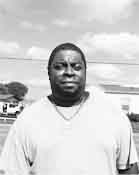 | Gary Potts is the owner and operator of Professional Automotive Detailing. Gary was born and raised in Wichita where he graduated from Butler County Community College with an associate degree in business. He has been in the automotive industry for past 24 years, and has owned his businesses since 1998. If you have any questions call him at (316) 871-1025 or stop by at 3027 S. Broadway; pottsprodetail@yahoo.com |
Automotive Service & Repair
2011-05-01 13:04:00
Ask the vehicle “inside and outside” guy
Question: I just painted my truck a dark metallic blue with acrylic enamel. This is my first paint job on a vehicle and now that it is dry it looks very uneven. Shiny in certain places and dull in others. Is there anything that I can do other than repaint the whole thing again? I am not looking for a perfect job but I don’t like the uneven look either. Will wet sanding or using a rubbing compound help at all? What types of paint are used on automobiles anyway?
Answer: Unfortunately with metallic acrylic enamel, the only solution is to repaint. In regards to your question on types of paint used on automobiles, let me answer this with some more information provided by Bob Story. The types of paint that have been used have varied greatly over the years.
In the early years, between 1900 and the 1920’s, Japanese varnishes were used. The varnish was applied by brush. In the 1920’s, several paint manufacturers were involved in the development of nitrocellulose lacquers. This paint had rapid drying and low viscosity properties, and was applied with air pressure through a spray gun leaving a hard dry finish in approximately one hour. When rubbed, polished and waxed, it far surpassed in durability and appearance of the qualities of the Japanese lacquers.
In the mid 1930’s, a new and completely different type of paint was developed, the alkyd or synthetic enamels. It proved to have superior qualities in film strength, adhesion, luster, flexibility and durability over all previous paints. The resin base was developed from the reaction between phthalic anhydride and glycerin, with gums, oils and plasticizers added during the manufacturing process a drying oil such as linseed, a polyhydric alcohol, such as glycerine, and a dibasic acid, such as Phthalic Anhydride. It dries by solvent evaporation, like the lacquer paints, but the resin remains soft and sticky when no solvents are present. It cures to a hard finish by absorption of oxygen from the air. The curing process can be accelerated by heat, and several methods of baking enamel were developed. Unlike lacquer, when dry, it needs no polishing to produce a high luster finish.
As time passed, chemists developed a substitute for nitrocellulose lacquer, using an acrylic resin as a base. The resins used in acrylic lacquer tend to be slightly brittle. This deficiency is overcome by the use of a plasticizer ( a liquid that is a solvent for these resins and softens them slightly). A cellulosic resin is any resin derived from cellulose (pure cotton). Acrylic lacquer was used extensively by General Motors.
During the late 1960’s and early 1970’s, technology brought on the development of acrylic enamel, which was harder and more durable. Chemically, it is a cousin to synthetic enamel, but is modified with acrylic resin, and is not soft and sticky with no solvents present. It cures further with the absorption of oxygen from the air. Unlike the lacquers, which remain soluble in solvents, the enamel family is insoluble in solvent when cured. An acrylic resin is chemically any polymer whose basic monomers are chemical derivatives of acrylic acid.
In the mid 1970’s, polyurethane enamel was developed to withstand the severe stress of high speed airplane surfaces, which are subject to rapid temperature changes and flexing. This paint was much more durable than the acrylic enamels. Acrylic urethane enamels were developed to withstand environmental elements, such as acid rain and ultra violet rays. It is the most durable paint to date and is used almost exclusively in all situations today.


